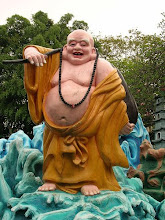The origin of Indian classical music has been
dated as far back as the Vedic times. In today’s article, Sadhguru talks
to us about the difference between the two major forms – Hindustani and
Carnatic – in terms of the use of sound and emotion. He also talks
about perceiving music beyond entertainment, as an opportunity for
evolution.
Within Indian classical music, there are two basic groups: Carnatic
music, which is of the South, and Hindustani, of the North. Hindustani
music is more about the sound; Carnatic is based on emotions. It is not
that they have no understanding of sounds, definitely they do, but there
is more emotion involved. It may not have been so earlier, but in the
last four hundred years, Carnatic music has become more emotion based
because of the bhakti movement, the devotion movement that happened in
southern India. Most of the existing Carnatic music was written by
devotees like Thyagaraja or Purandara Dasa, so a lot of emotion was brought into the music.
Hindustani music, however, avoided emotion and simply used sound the way it needs to be used. Within Hindustani there are different segments of music, highlighting the various ways that music can be used. If you really want to appreciate Hindustani music – not to learn, not to perform a concert – you would need at least one or two years of training. This is just to be able to appreciate the intricacies of this form of music. They have used sound in such ways that if you are willing to open up, it can do miraculous things to you.
What does sound mean? In yoga we say Nada Brahma, which means Sound is Divine. This is because the basis of existence is in vibration, which is sound. This can be experienced by every human being. If you enter a certain state within yourself, the whole existence becomes sound. This music evolved out of such an experience and understanding. If you observe people who are deeply involved in classical music, you will see they are naturally meditative. They become sage-like; almost like saints. So, this music was not viewed as entertainment. It was a device for the spiritual process. The ragas were used to evolve a person into higher dimensions of perception, experience, and evolution from within.
The simplest thing you can do to get started is to go for contemporary publications on classical music. These are slightly modified so that people with no training can appreciate this type of music. The Music Today series, for example, has a particular collection of ragas for the morning, afternoon, evening and night. You could also purchase the music of some very wonderful musicians and top artists, many of whom have been to the yoga center. We have concerts twice a year, here at the Isha Yoga Center.
Source Link : http://blog.ishafoundation.org/lifestyle/isha-living/music-entertainment-or-more/
Sadhguru:
In terms of understanding sound and using it to influence the human
system, I have personally studied this aspect in all my travels. Nowhere
else in the world has sound been looked at with the kind of depth as in
Hindustani music. |
| Thyagaraja |
Hindustani music, however, avoided emotion and simply used sound the way it needs to be used. Within Hindustani there are different segments of music, highlighting the various ways that music can be used. If you really want to appreciate Hindustani music – not to learn, not to perform a concert – you would need at least one or two years of training. This is just to be able to appreciate the intricacies of this form of music. They have used sound in such ways that if you are willing to open up, it can do miraculous things to you.
What does sound mean? In yoga we say Nada Brahma, which means Sound is Divine. This is because the basis of existence is in vibration, which is sound. This can be experienced by every human being. If you enter a certain state within yourself, the whole existence becomes sound. This music evolved out of such an experience and understanding. If you observe people who are deeply involved in classical music, you will see they are naturally meditative. They become sage-like; almost like saints. So, this music was not viewed as entertainment. It was a device for the spiritual process. The ragas were used to evolve a person into higher dimensions of perception, experience, and evolution from within.
The simplest thing you can do to get started is to go for contemporary publications on classical music. These are slightly modified so that people with no training can appreciate this type of music. The Music Today series, for example, has a particular collection of ragas for the morning, afternoon, evening and night. You could also purchase the music of some very wonderful musicians and top artists, many of whom have been to the yoga center. We have concerts twice a year, here at the Isha Yoga Center.
Source Link : http://blog.ishafoundation.org/lifestyle/isha-living/music-entertainment-or-more/




























No comments:
Post a Comment